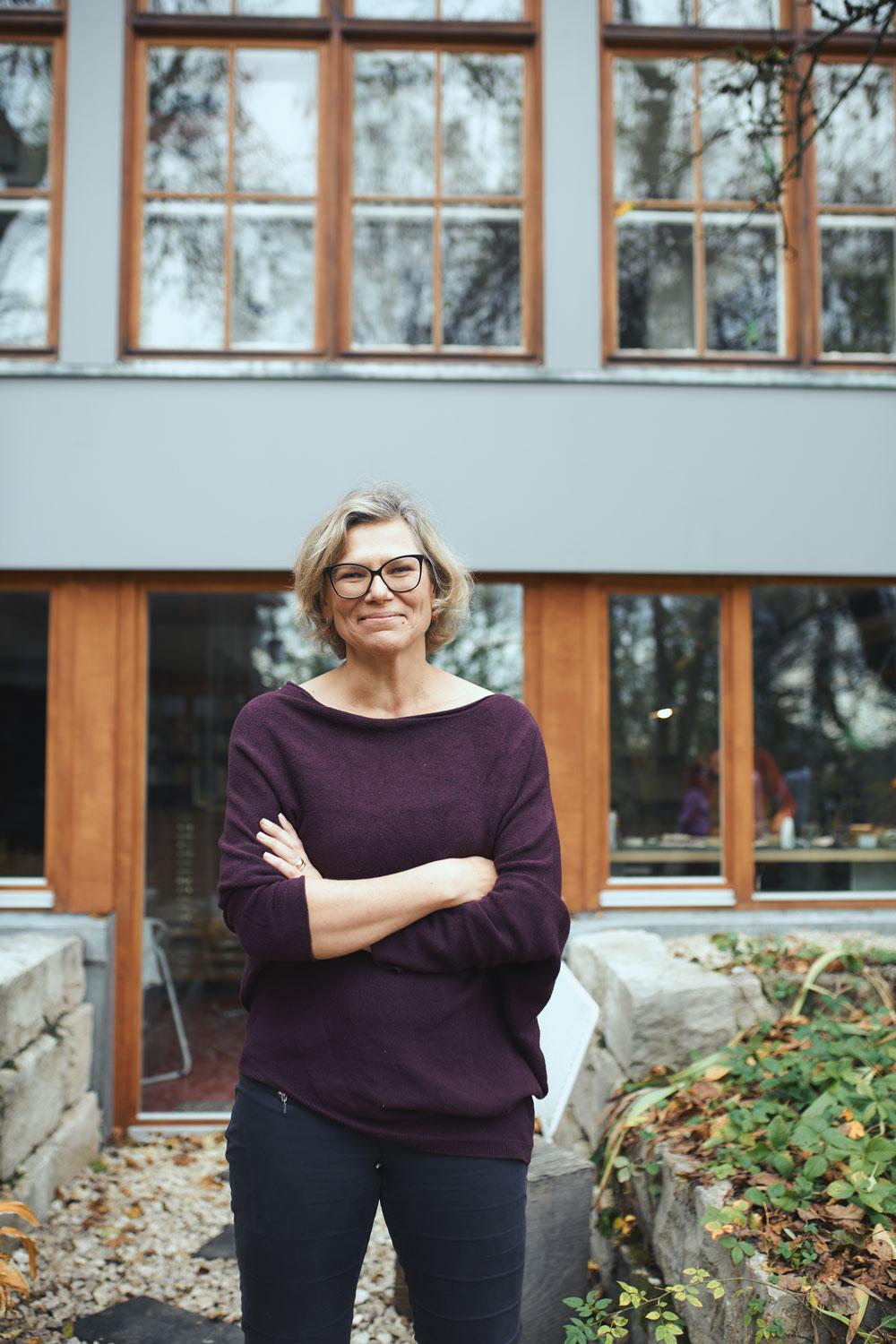Katrin Nottrodt
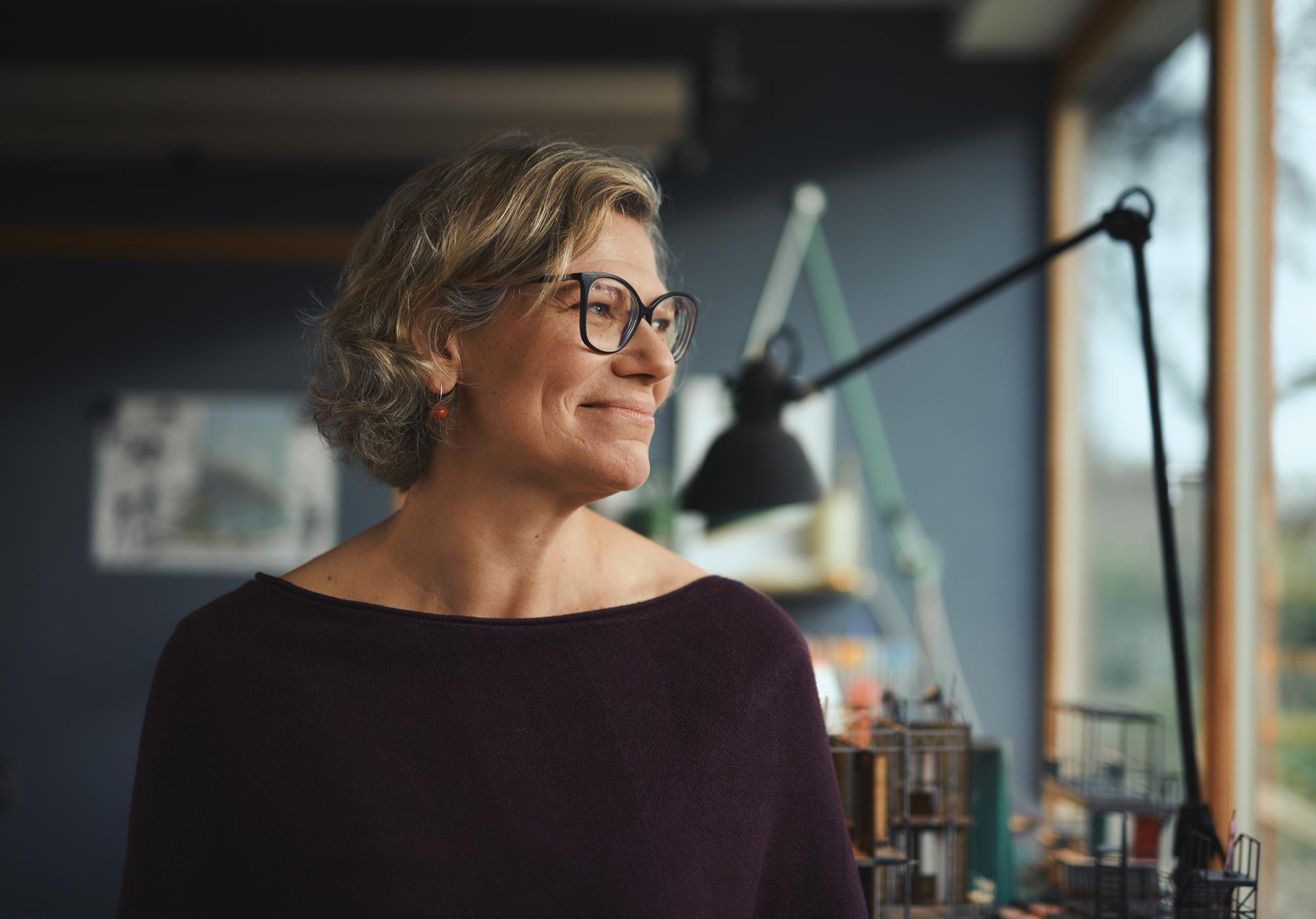
How did you get into your profession?
I was lucky enough to attend a school that had a theater club where I got to act. I couldn’t imagine becoming an actress, but I was more interested in three-dimensional work. By chance, I found out about the stage and costume design program – and that was basically the first time I encountered this job title, which set me off on my search. My interest in theater actually came from painting. I wasn’t a regular theater-goer growing up. My first encounter with opera, for example, was ‘Don Carlos’ when I was 12, and I found it incredibly boring and didn’t understand it at all. I grew into it later and realized: this is totally my world.
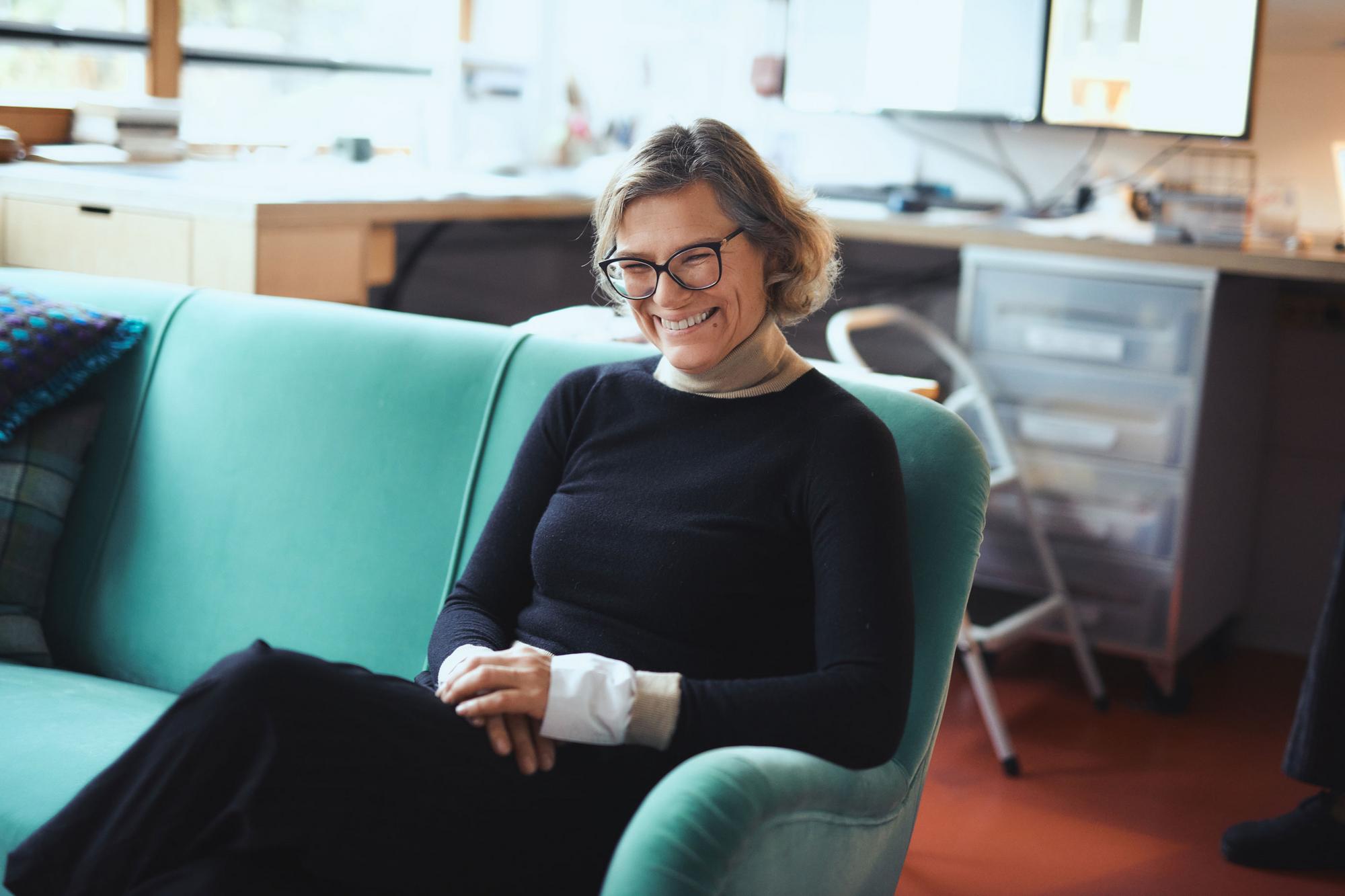
How did you get into the study program?
After finishing high school, I did an internship at the Teatri di Reggio Emilia in Italy and applied to universities at the same time – I was extremely inexperienced about what the universities were asking for back then, and I didn’t get accepted in my first year. They told me I needed to experience the world outside before I tried to depict it on stage – I was 22 – and today, I completely agree. I spent a lot of time abroad, did a year-long internship at the Thalia Theater in Hamburg and in the men’s tailoring department at the Hamburg State Opera. Then I applied again, to several universities at once, created tons of application portfolios, and painted like crazy. Eventually, I was accepted in Hamburg.
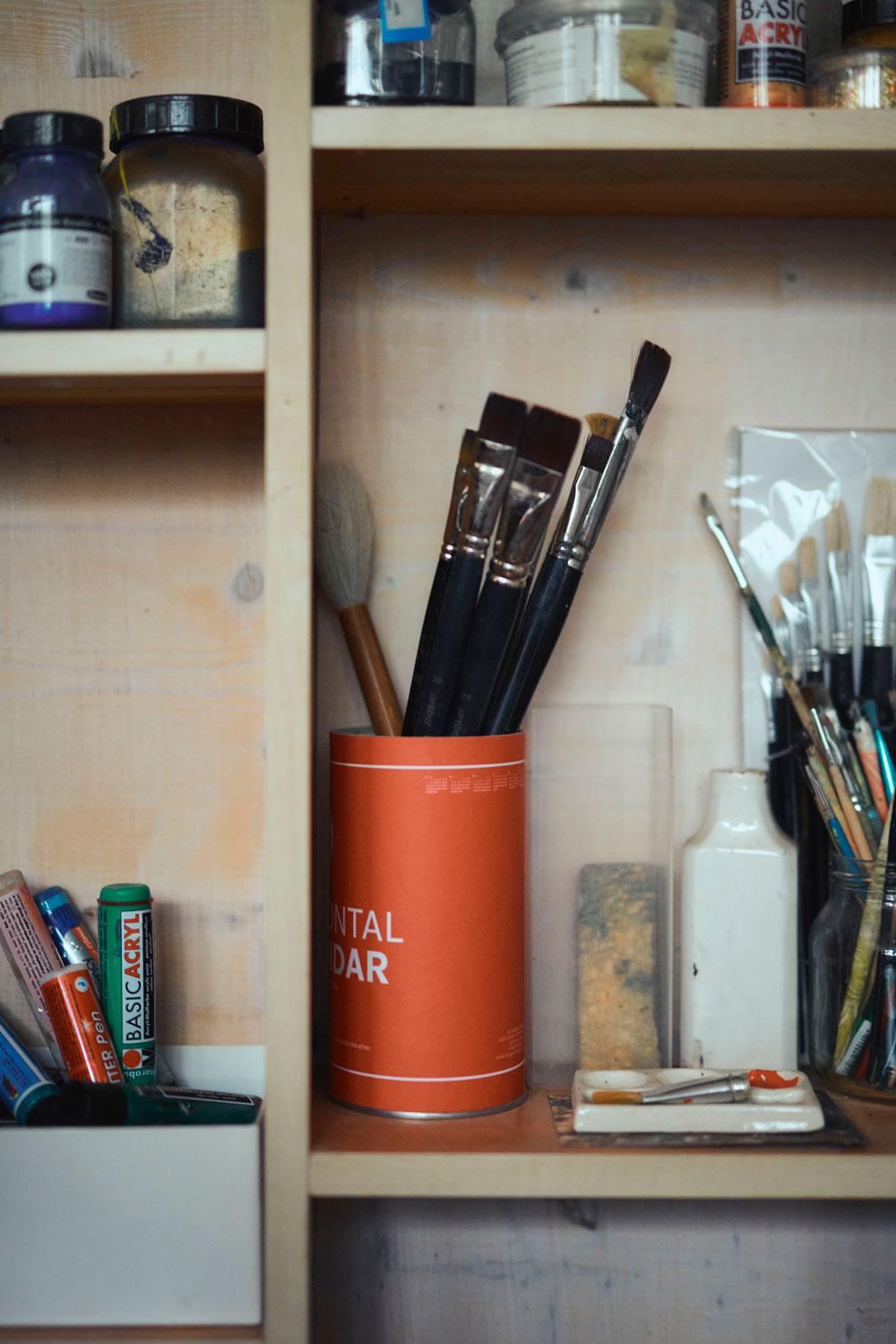
What’s your view on the role of university studies?
I’d say young people shouldn’t go straight into art school after high school. To really find your artistic approach and figure out what you’re interested in, you need free time to grow. I was really good at copying drawings and paintings when I left school, but that had nothing to do with me. The process of engaging with your own artistic personality – who you are, how you want to express something – that’s something you have to work on; no one can teach you that. Someone can show you how to communicate something technically, but finding your voice comes from practicing and trying things out on your own.
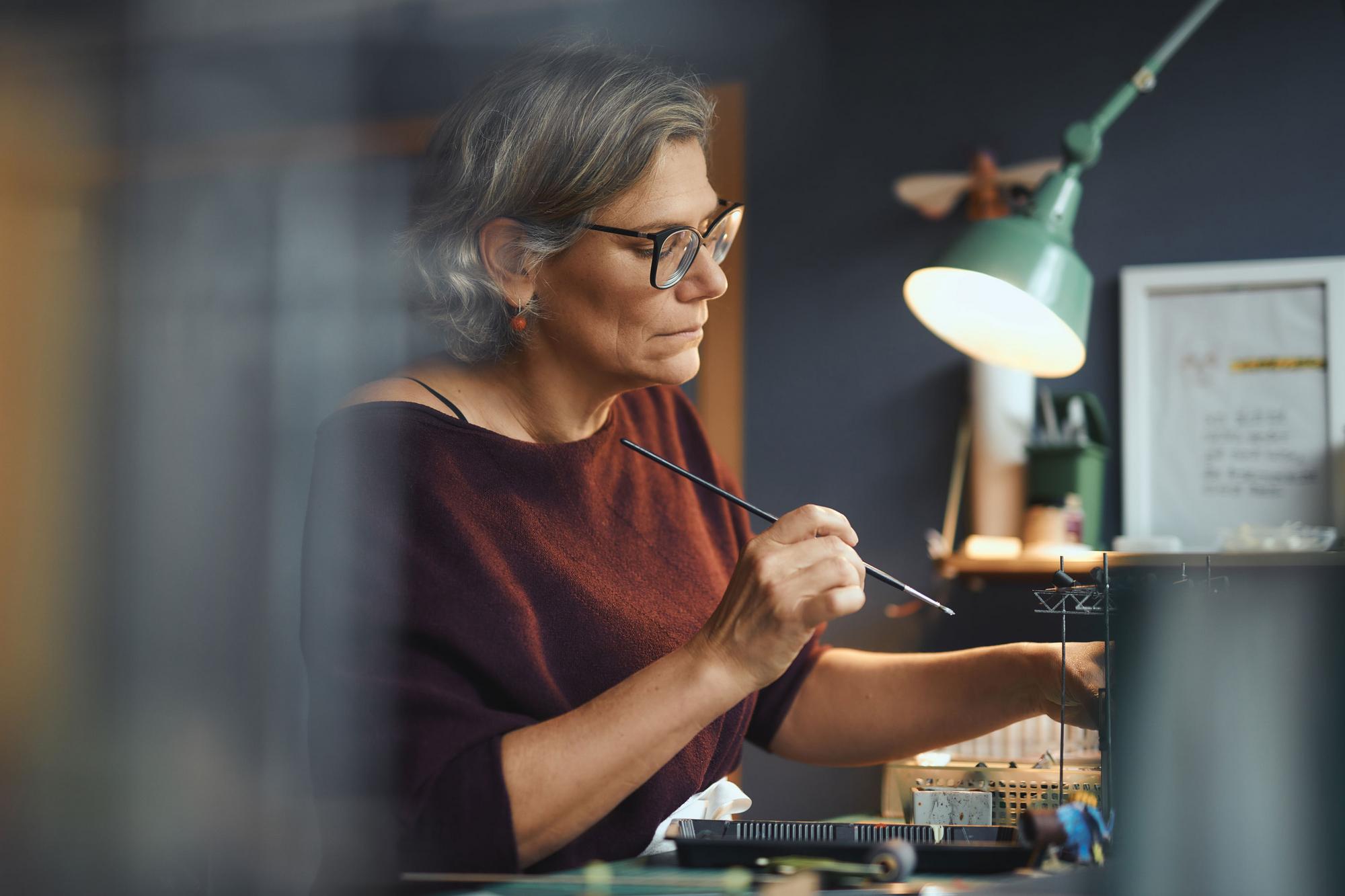
How did your studies at HFBK in Hamburg compare to ADBK in Munich?
The general vibe at HFBK during my time there was all about theoretical concepts, and much of it was new to me and completely confusing and strangely experimental, which is probably great in its own way. Painting, on the other hand, almost didn’t exist there. The Munich academy, in comparison, was more foundational, less experimental, and more focused. There were sculptors, painters, and much more funding – a third of our model-building costs were covered by the university. We had a university gallery where we could apply and exhibit our concepts, and I was, of course, involved. In Hamburg, alongside my studies, I got involved in university politics, sang in the choir, and visually staged our legendary concerts as part of a team. I experimented artistically in many different directions. In Munich, it was more project after project. I did bump into some resistance, though, because I didn’t want to work exclusively on theater-related projects but also wanted to explore free spatial concepts. This culminated in my diploma project, which the examination board didn’t really understand or follow, but I pushed through.
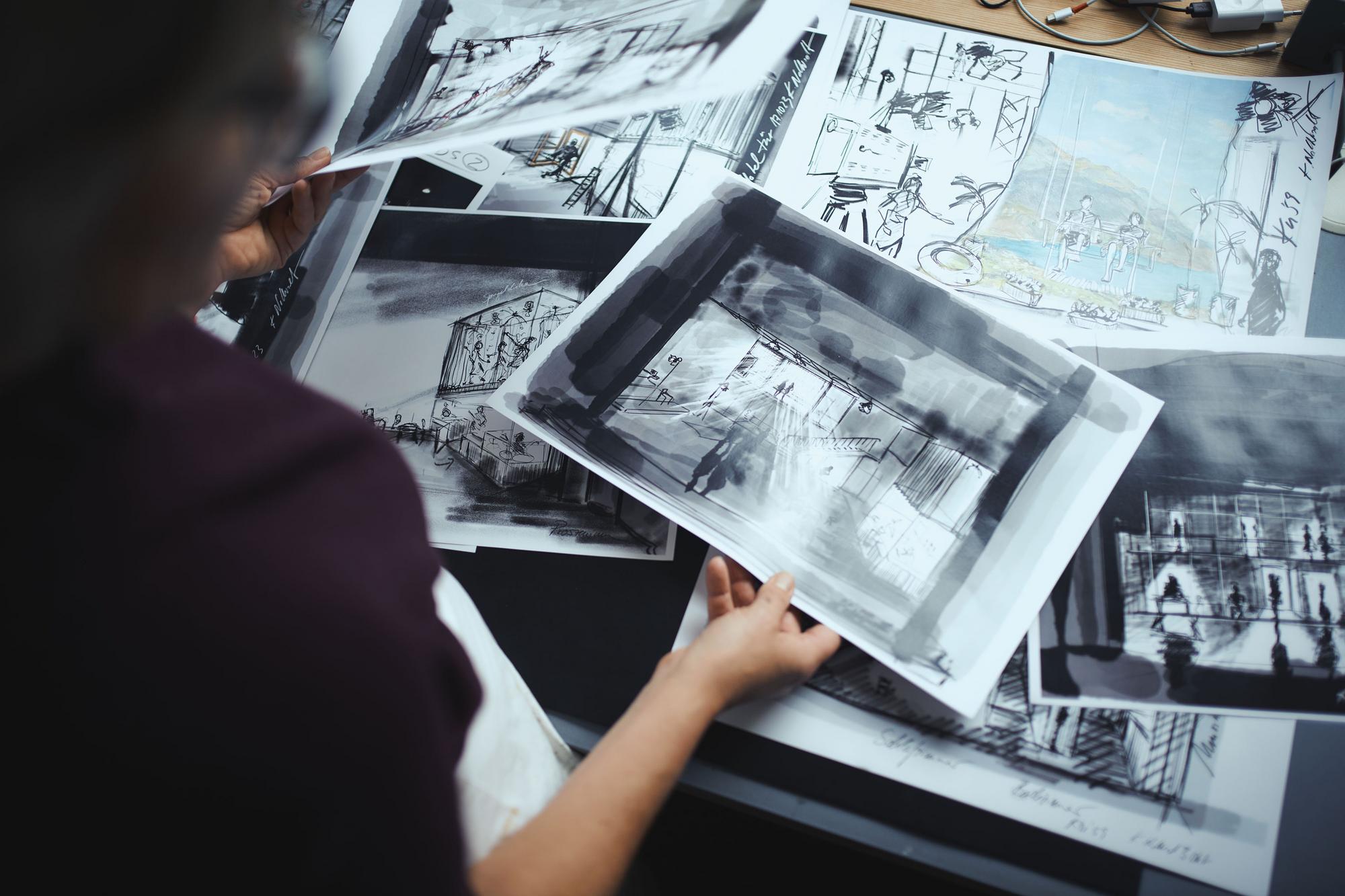
Did you have role models or idols?
Not in the theater world, no. I was more inspired by painting. Visual artists and sculptors fascinated me much more than any set designers. Maybe also the early works of the writer Elfriede Jelinek. The stranger and more complex, the better.
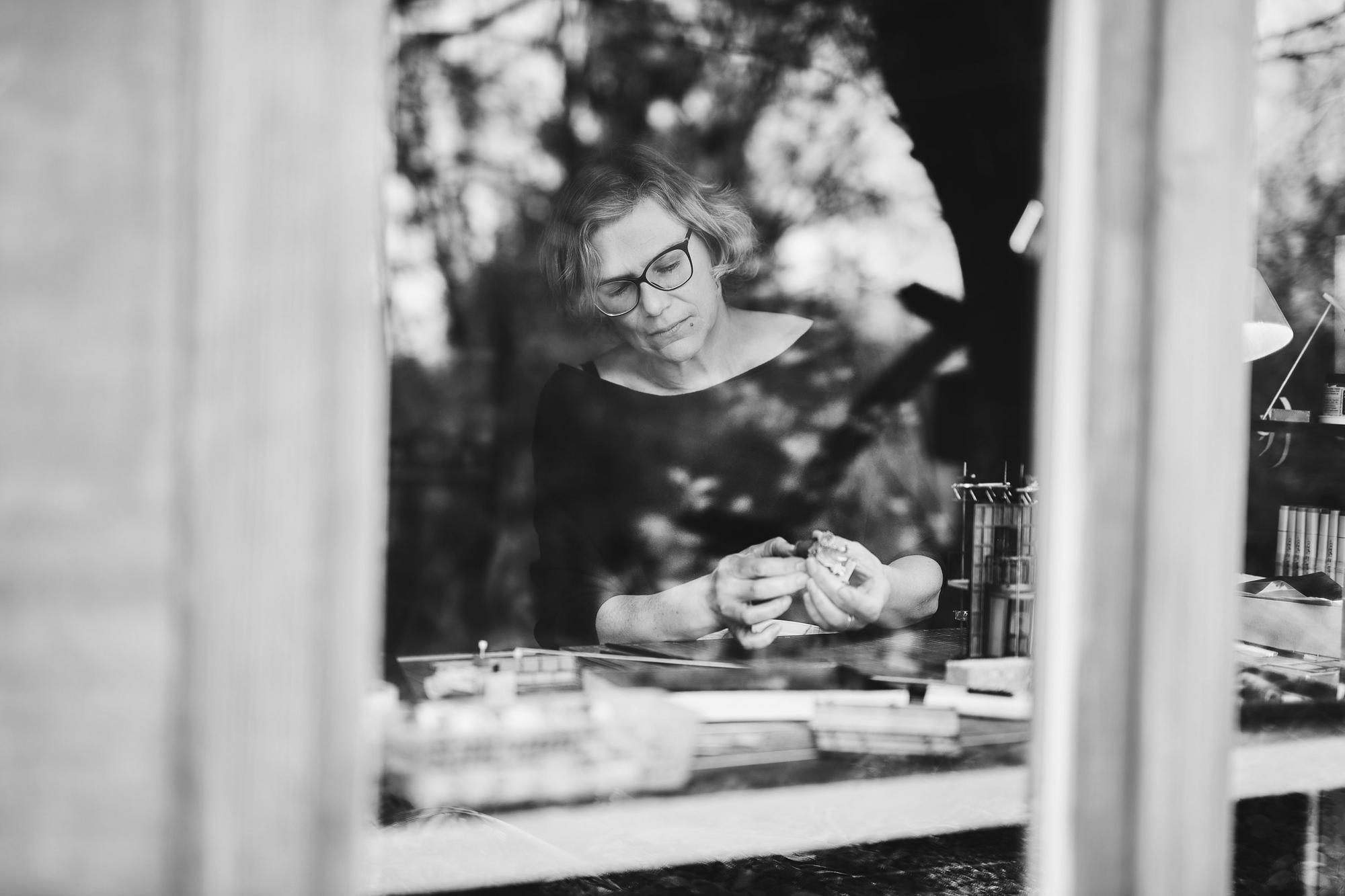
How did you get your start in the profession?
It was a smooth transition because I was already designing and implementing sets for the Kampnagel factory during my first semester, for example, for the Junge Hunde Festival. It just built from there. More and more contacts, more and more theater productions realized one by one. My biography lists my first projects from 1992, but I officially got my diploma in 1998. I definitely count these early works, though, as they were aesthetic milestones for me and very important projects at Kampnagel, done in collaboration with directing students.
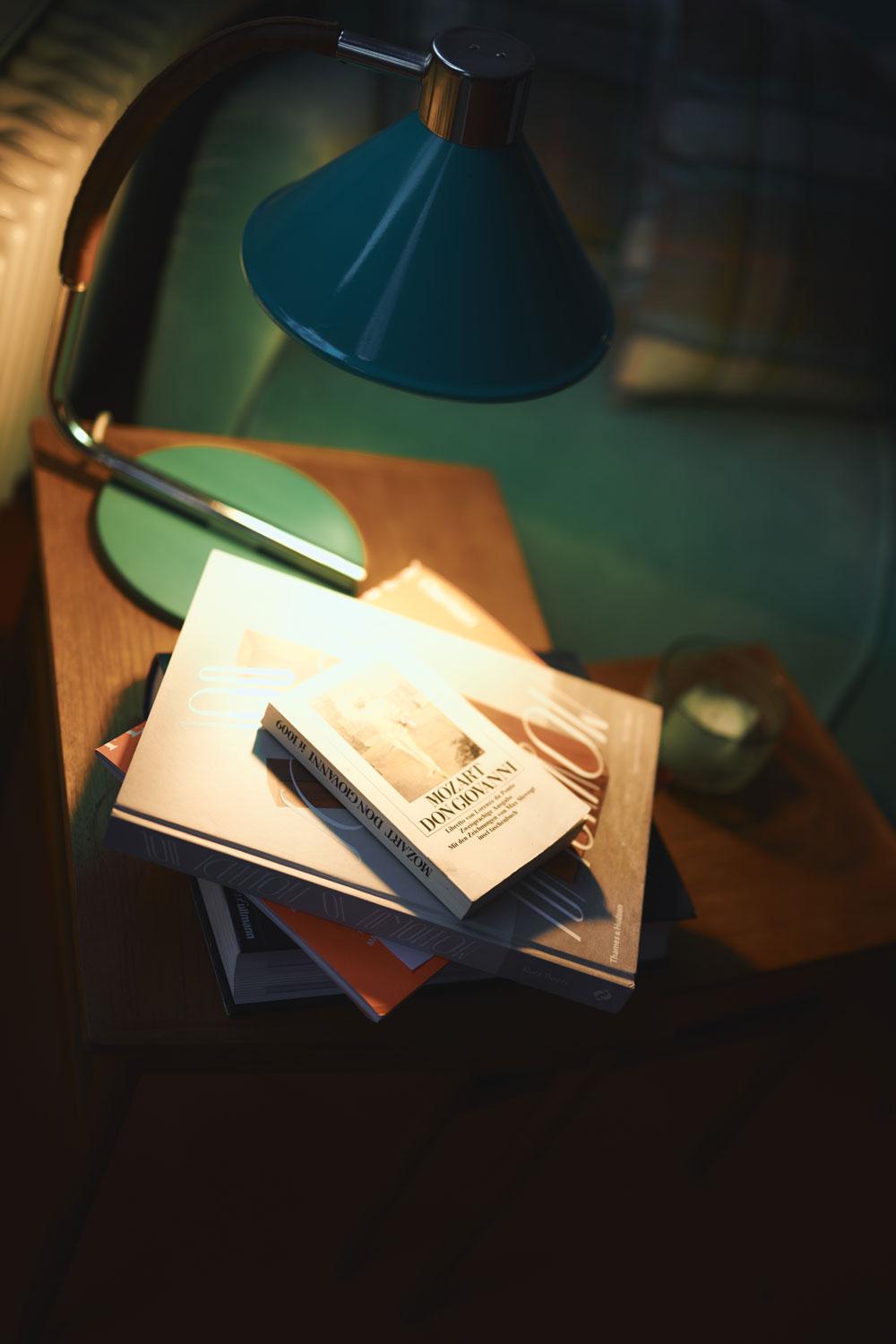
Did your time at Kampnagel influence you?
It was incredibly important. It really shaped us, aesthetically speaking. Those factory halls, the oversized spaces with almost no budget. Sitting down and asking: where’s the focus? Where can I concentrate things? How can I offer something to the audience without covering everything up? Instead, making small visual decisions to direct the viewer’s gaze – I learned that there. And then there were the in-house welders and carpenters. There was also, I don’t know if they’re still there, an alternative settlement of people living in caravans who also worked at Kampnagel. The willingness to contribute and go along with any crazy idea was both tough and extreme. We had on-call work hours, etc. That really inspired and energized us.
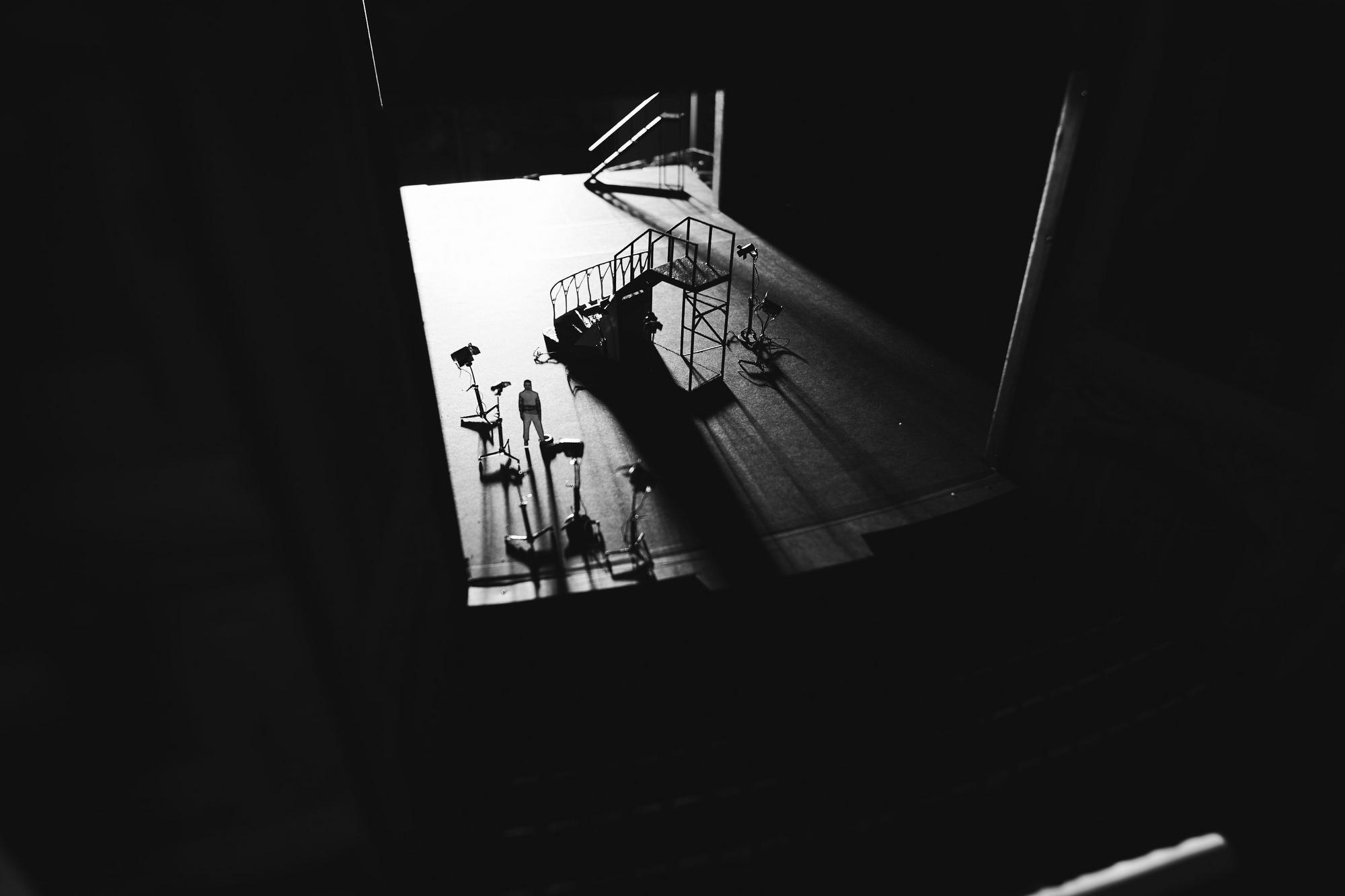
How important was your recurring collaboration with Esther Bialas and Nicolas Stemann?
It was extremely important because we could rely on each other as a well-coordinated team. We also grew together aesthetically and set new markers for a certain type of director’s theater. Nicolas and I don’t work any differently today – it’s the same working relationship with just a bit more experience. But I believe I can only do this by also working with other directing teams. You always need something different in between because the routine of ‘I already know how this goes’ weakens the result.
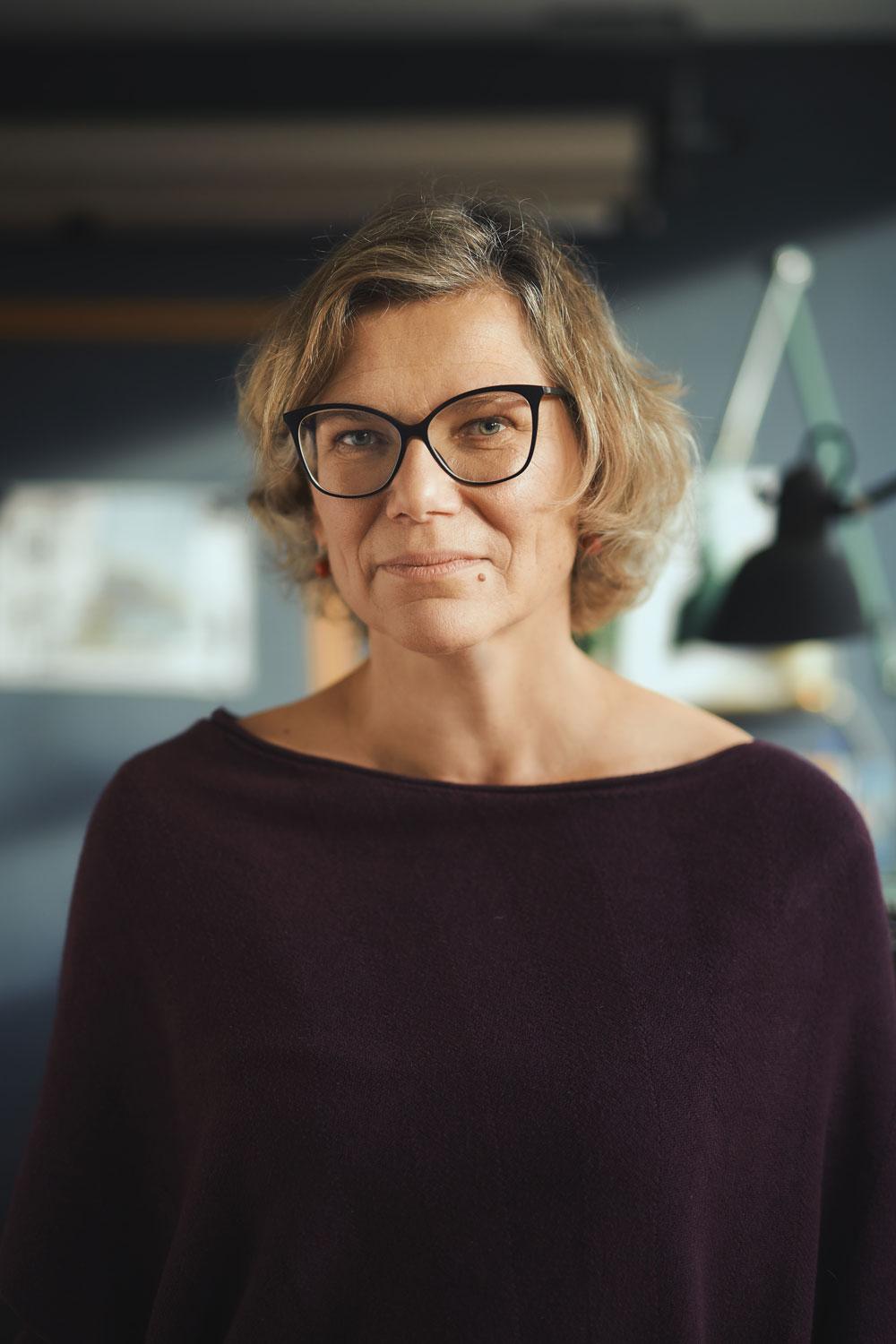
How do your stage designs come to life?
I don’t really know how ideas come about. You quickly feel if a design is right or if a decision is the right path or the truthful way. I don’t calculate it. It always comes from engaging with the subject and the play, and from that, a spatial arrangement emerges, without a plan or strategy. That’s why I believe they are always genuine, not contrived, and not following any trend or fashion. The ideas just come. They should surprise! And stage designs are only as good as the direction. It’s closely tied together. A great set design is useless if it’s not performed on or filled thoughtfully.
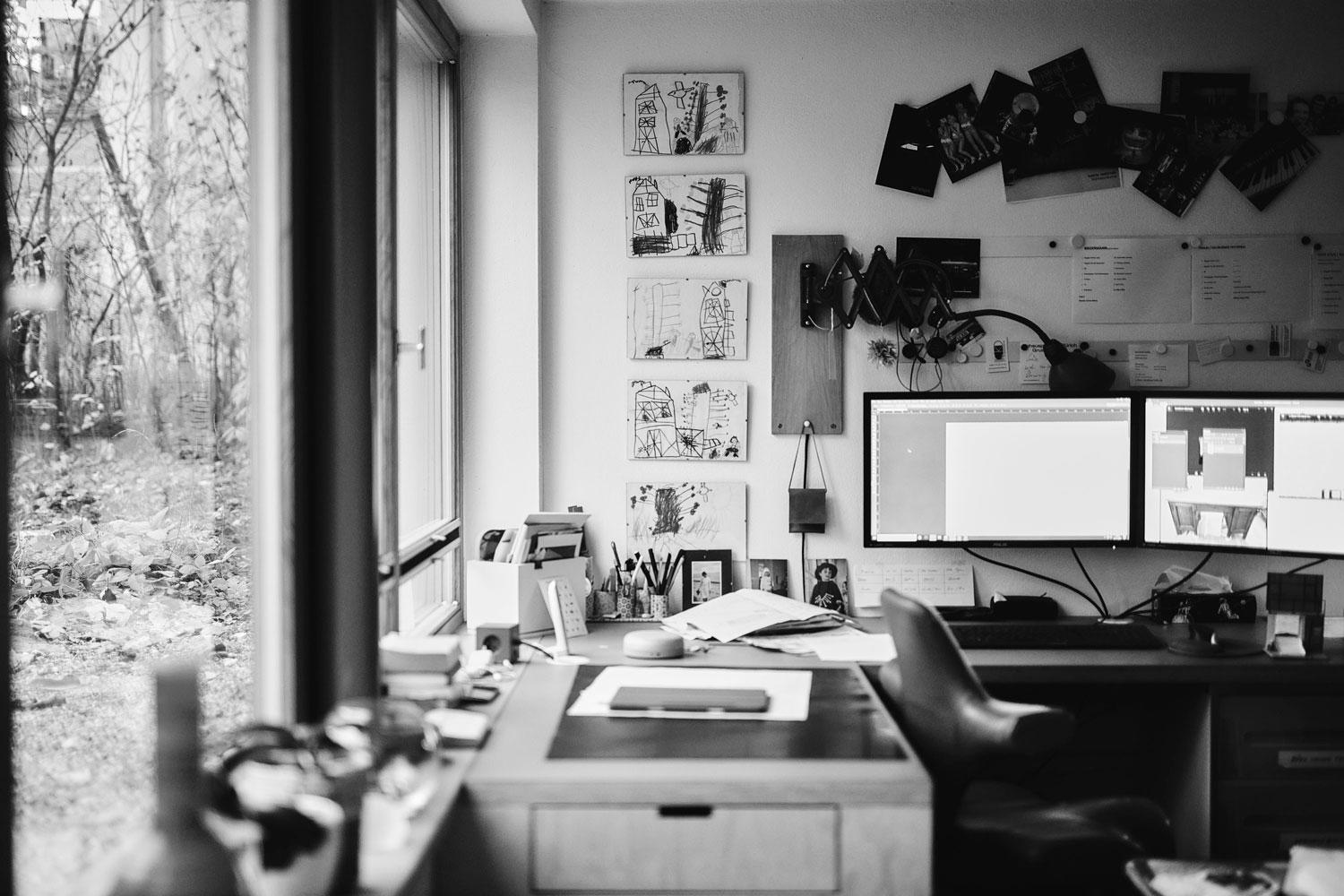
Who brings the creative impulses for the space? What’s the creative process within the team?
It varies a lot. It depends on the play – what’s the text? Is there even a text yet, or is it still being written? Is it a classical opera? How many actors are there? What space is available? Where is it set? Where is it imagined? Sometimes there isn’t even a title yet, and sometimes the director has a very clear vision, and either I can work with it or I develop something different and offer it as an alternative, but I have to justify it. It’s important to stay open. Not always easy!
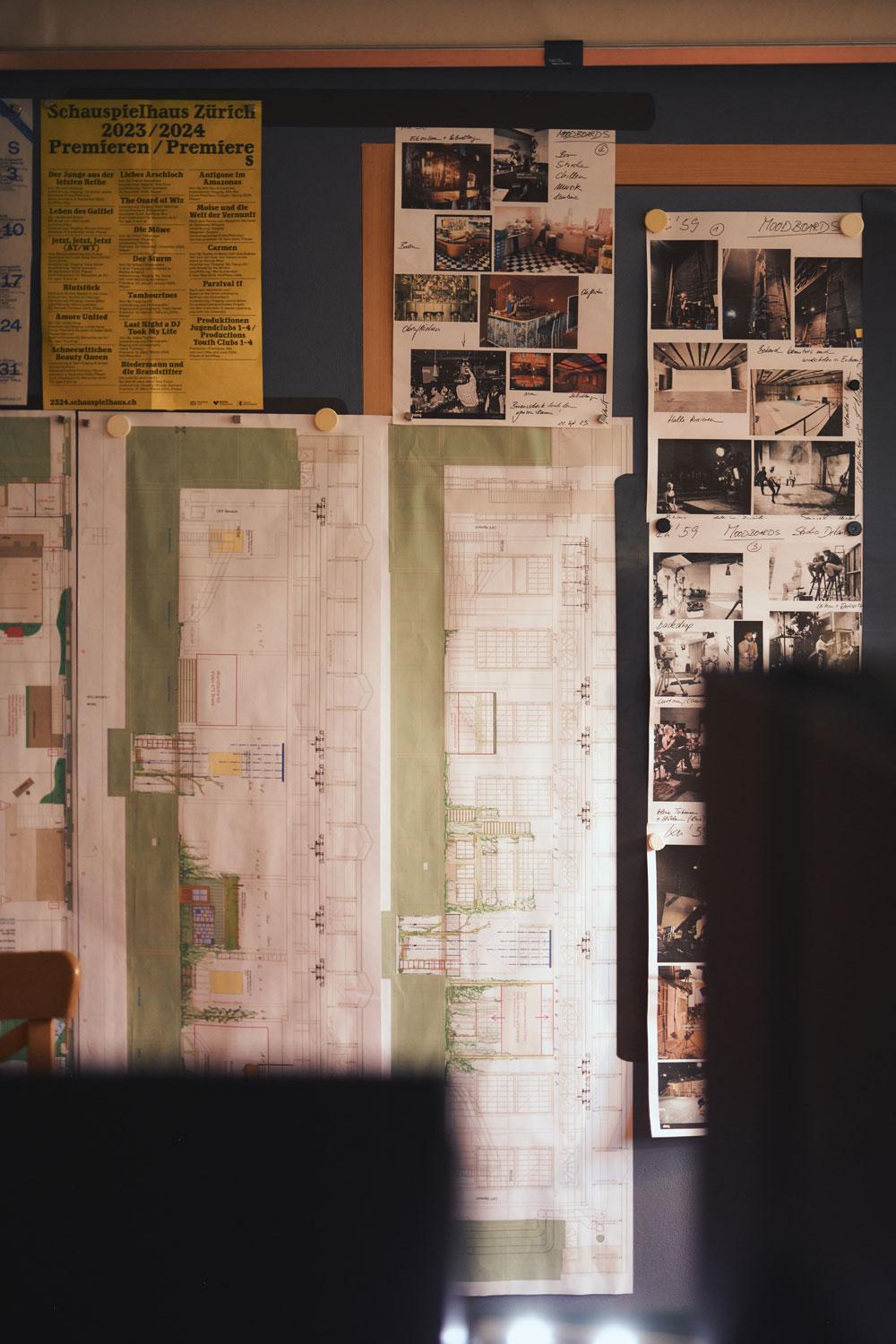
Where do you find inspiration?
Images, definitely museums and exhibitions. Sometimes even a walk. I love drawing, and if I had the time, I’d draw much more. A kind of collage landscape of individual picture snippets is what inspires me most. Additionally, there’s always intensive material research and deep engagement with the subject matter. Then I move quickly into building a model, putting it together in three dimensions, taking photos, and sketching over them. So it’s a constant process of collaging and reworking.
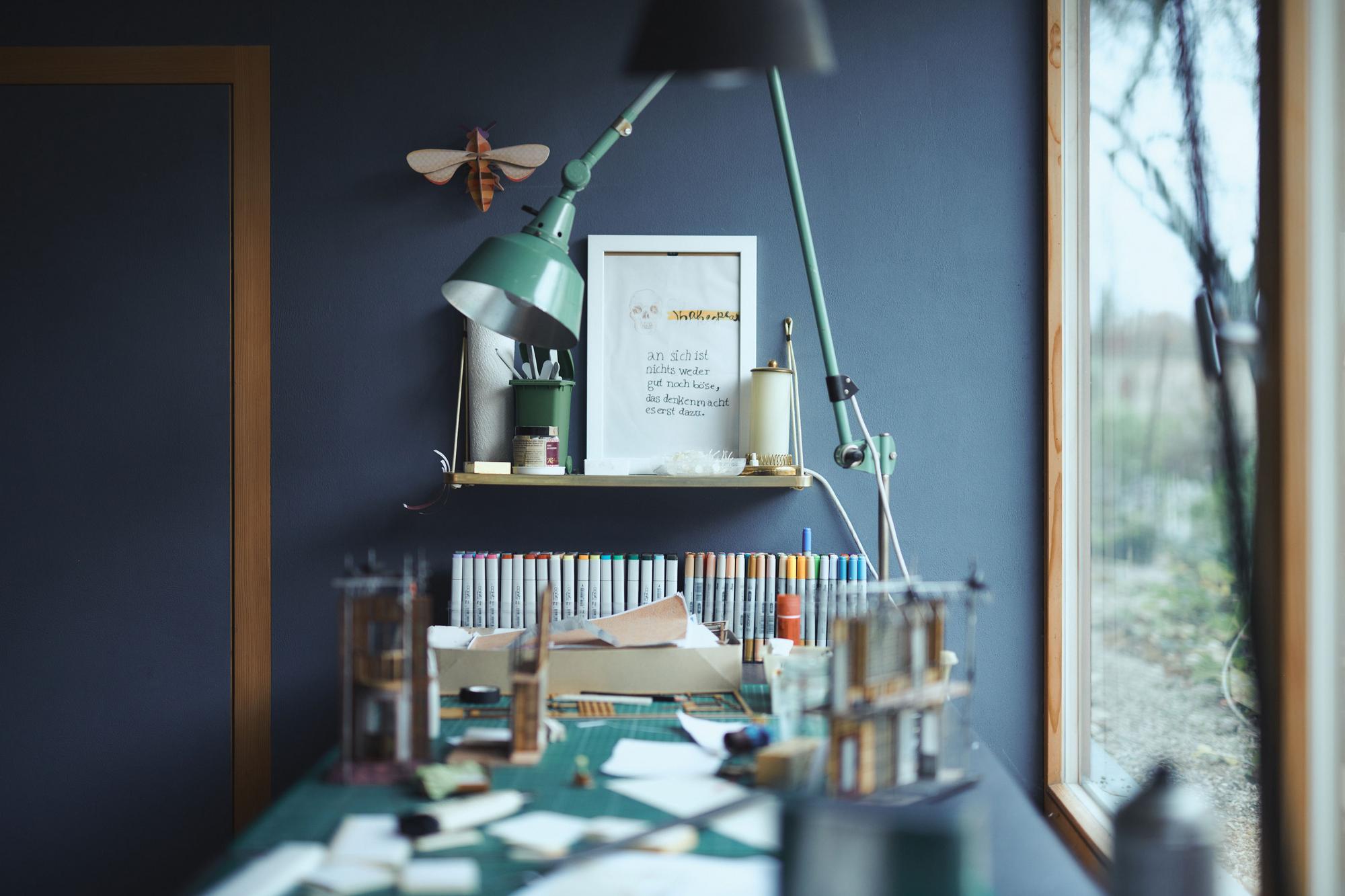
How do the location and theater influence your stage design?
I do think there are differences in how audiences perceive things and in their experiences. In certain theaters, you notice how a particular artistic aesthetic provokes more than in other cities. In Scandinavia, I’ve found that I ask a lot of the audience as a German set designer. They’re not as far along in terms of abstraction. But I’ve always been fortunate that, no matter where I go, my work is understood and well-received. So, in that sense, the location doesn’t play a major role in how I approach a design.
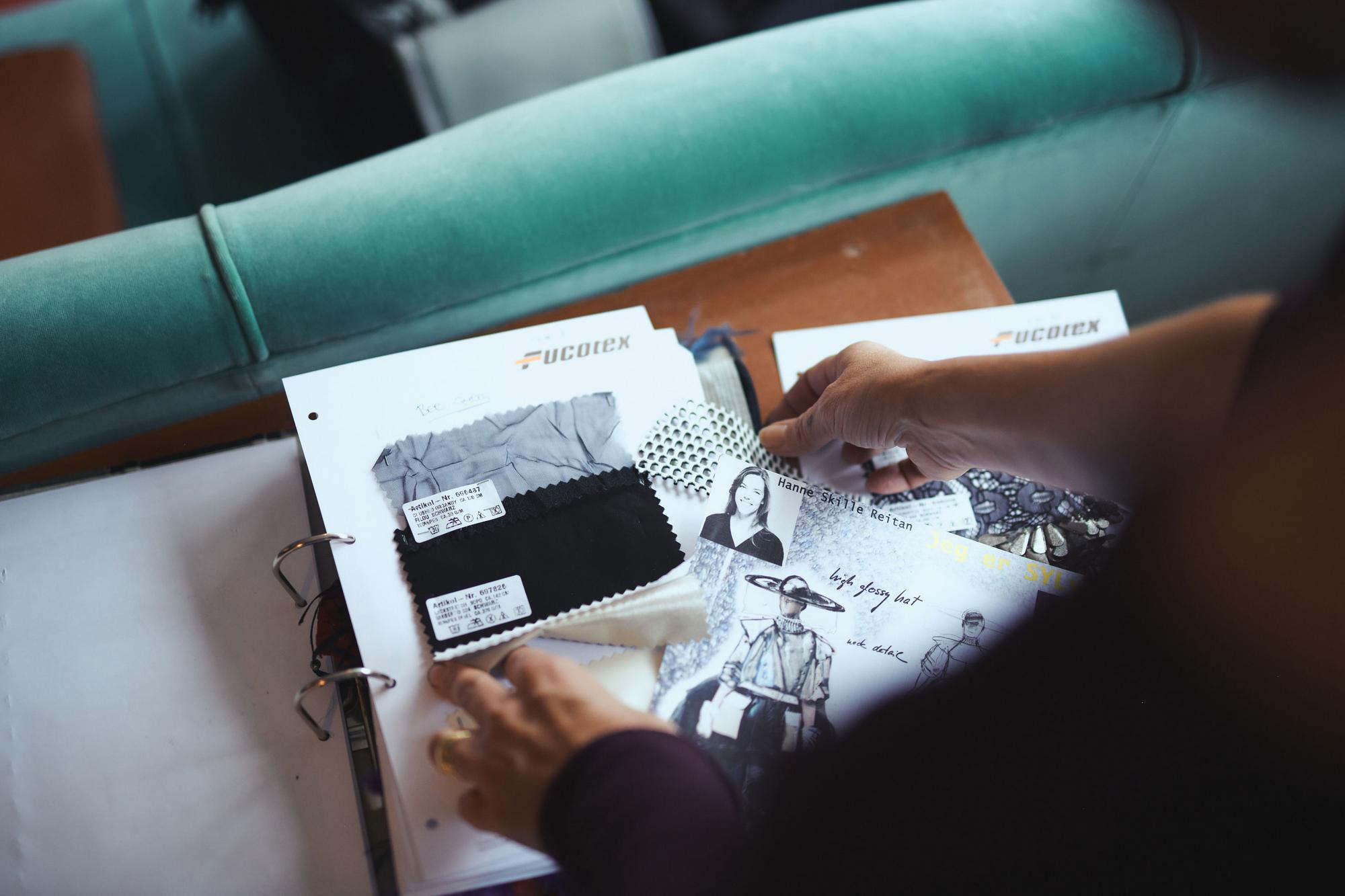
How do you handle criticism?
Criticism is clearly part of the job. You have to be open to it; otherwise, you won’t progress. You need feedback. If you don’t get criticism, there’s no point in continuing. You have to endure it to stay in the process. Criticism is crucial to pinpointing things, to concentrate and bring in ideas from all sides. Without criticism, you can’t get to the real essence of a stage design. If everything is ‘just great’ from the start, it stays vague. It doesn’t pop. And you need to be able to handle that.
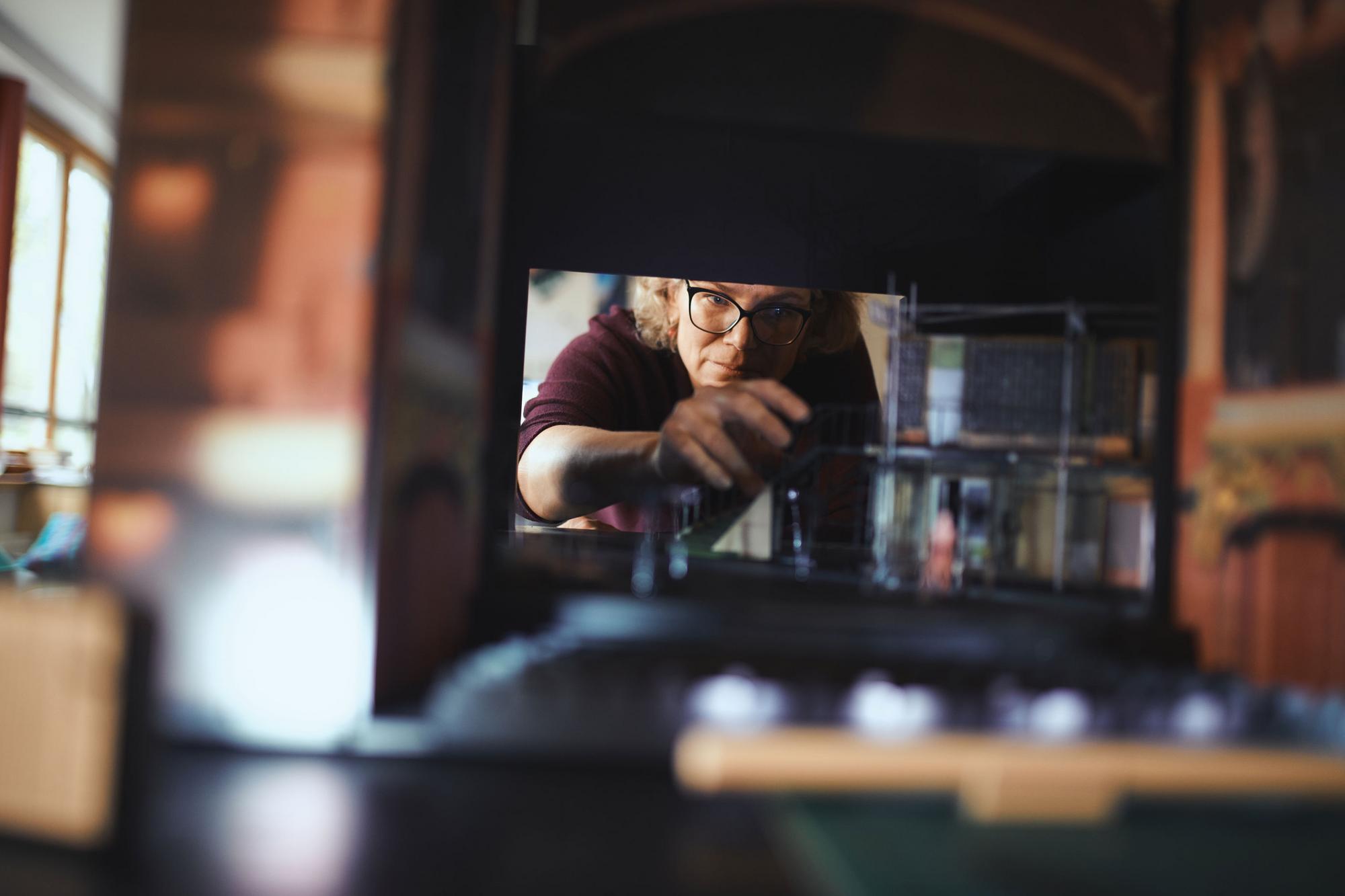
Have you ever doubted your path? What keeps you on track?
Of course, there are moments when it gets too much, and you feel like you’ve lost control. Sometimes I think there must be easier things I could be doing. And lately, I’ve been thinking more about whether what we do in theater is even relevant. A doubt about its relevance – what can I achieve with theater, and does it really address what society needs? But that’s only been in the last few years, maybe since COVID or the refugee crisis. On the other hand, I can only do what I’m good at – maybe I can do other things too, but the opportunity never came up. It’s a big privilege that I’ve never had to question my career because it’s a job I can make a living from, and I’m successful at it. When you have those two components and it’s also fun – you’re incredibly privileged.
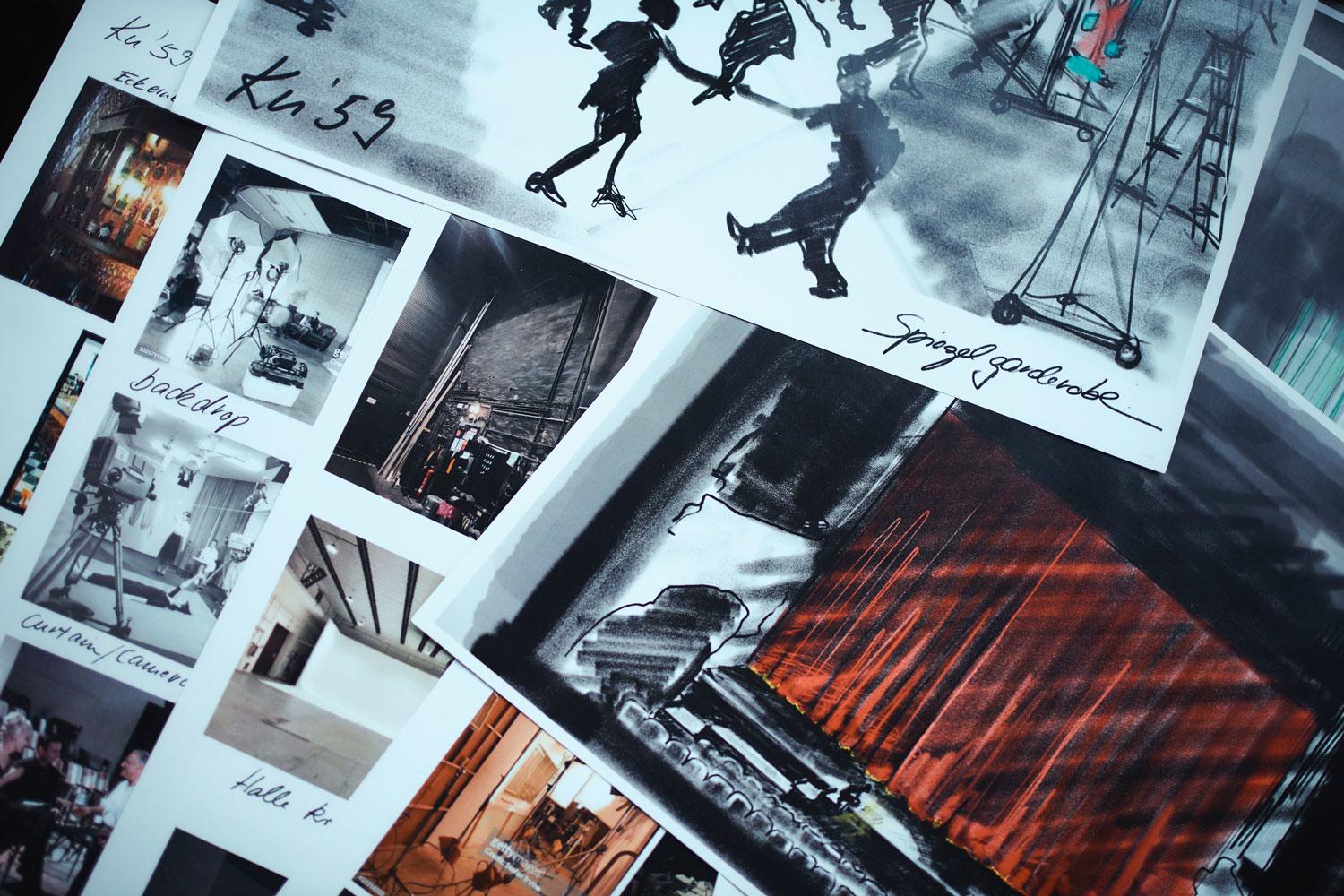
Who has influenced or impressed you the most?
Definitely other artists. But especially my colleagues from lighting and sound design with their expertise and ability to complete the space, giving it a framework and another soul. That’s always impressed and influenced me, adding that extra dimension.
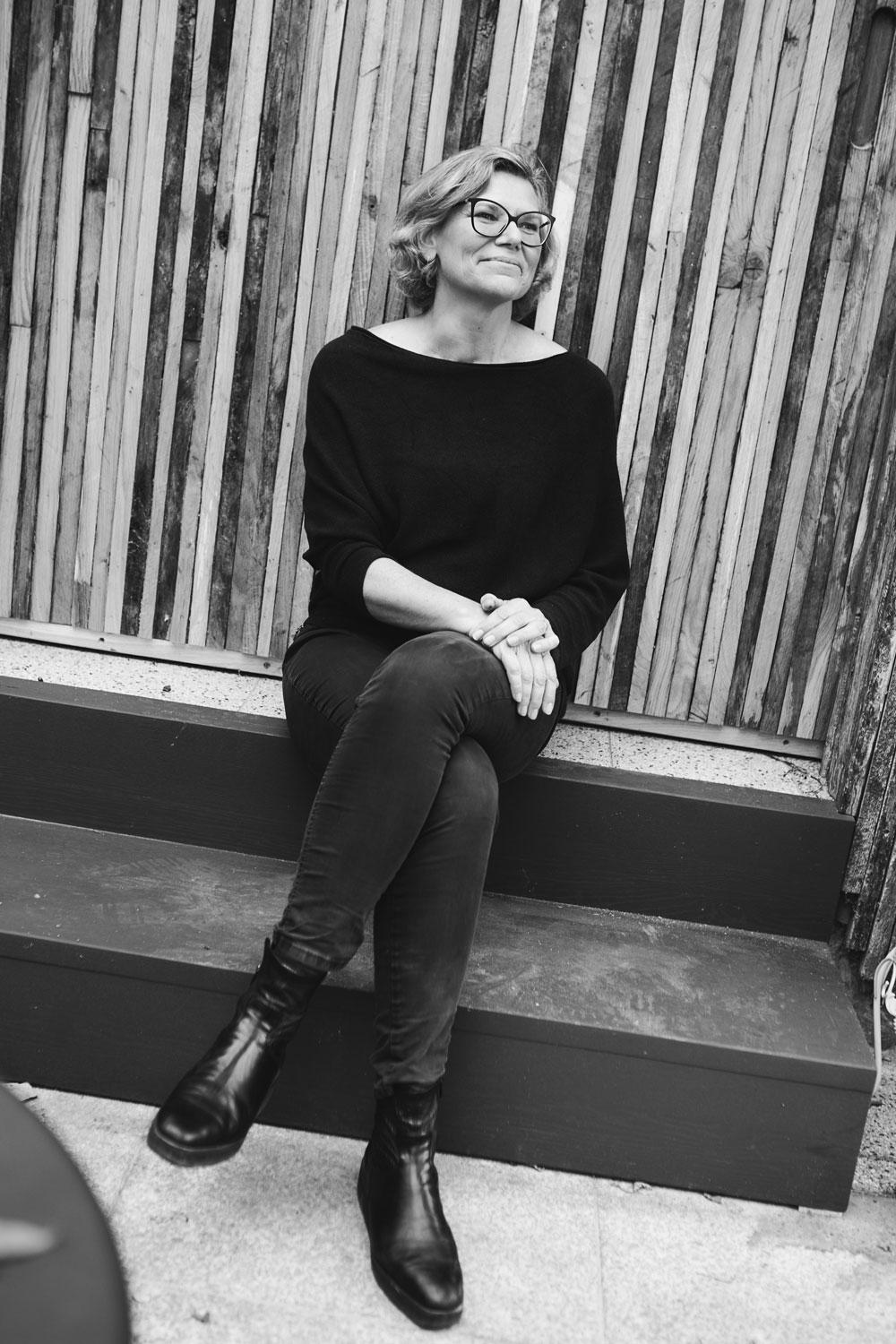
Can you enjoy the success of a completed project?
Absolutely. I always attend premieres, watch them, endure them, and thoroughly enjoy them. I can also be very proud. I usually say goodbye to the stage design after the premiere party and am glad it’s over.
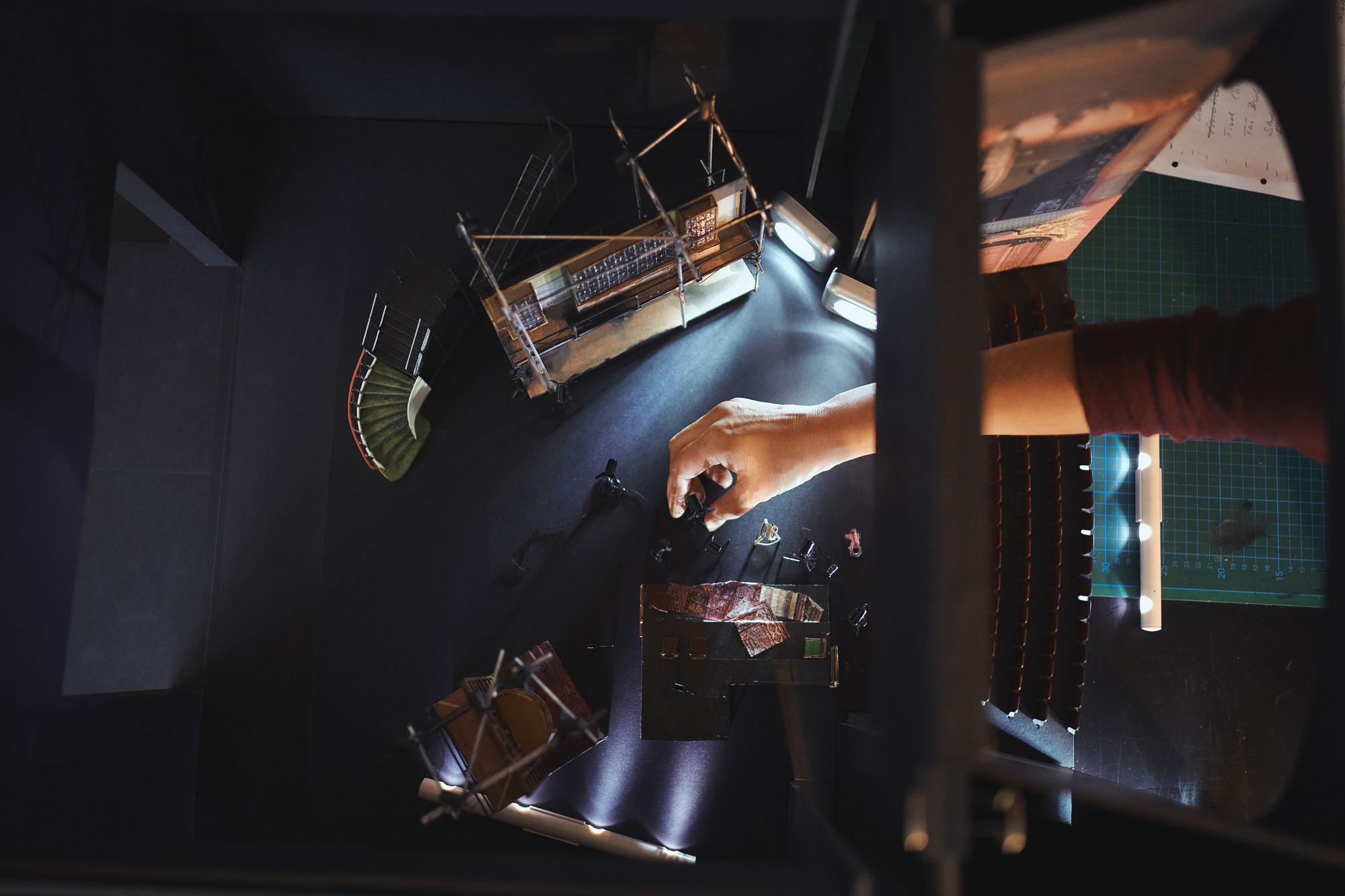
Where do you see room for development in theater, especially in set and costume design? Where is it heading?
We need to focus more and more on sustainability. Producing in abundance only to throw things away afterward won’t be possible in the long run. I believe we need to limit ourselves without negatively affecting creativity. You can be just as creative, but how things are produced will have to change. Money and materials simply won’t be available. So we’ll have to plan more long-term or weigh things more carefully. We’ll need to develop even more precise concepts, knowing exactly what we want. I also think the whole conversation around physicality and gender has reached a bit of a dead end. Diversity and non-categorization are important, but often theater thrives on surprise and needs provocation to remain interesting. Everything that’s currently being smoothed out to avoid controversy, I find boring.
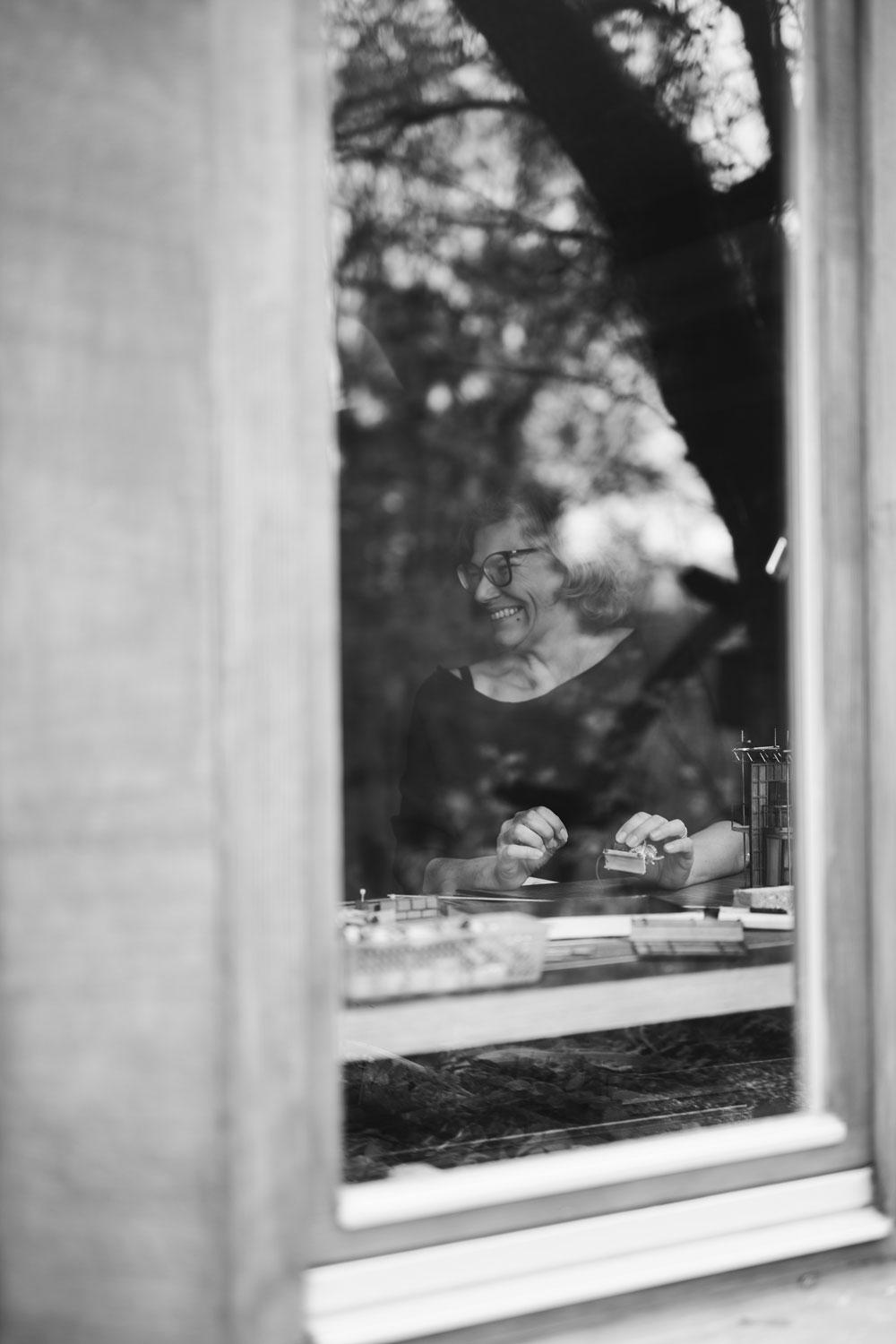
What does change mean to you compared to security?
I used to think I didn’t need rituals, but that’s not true. My large family and the fact that I’m a mother, constantly managing a ‘production’ at home, automatically gave me a structure that I had to follow to cope with the kids and everything else. For a long time, structure was a way to regain energy and strength. Now that my kids are grown, I’ve noticed that structure also fuels my career. Working at many different theaters is definitely an opportunity because it’s such a privilege to collaborate with so many talented people in a highly subsidized system. If you don’t soak that up, I don’t know why you’d choose this profession. It’s an incredible enrichment. Proving yourself over and over again, being heard and accepted, and giving something back to people and cities doesn’t feel like insecurity to me.
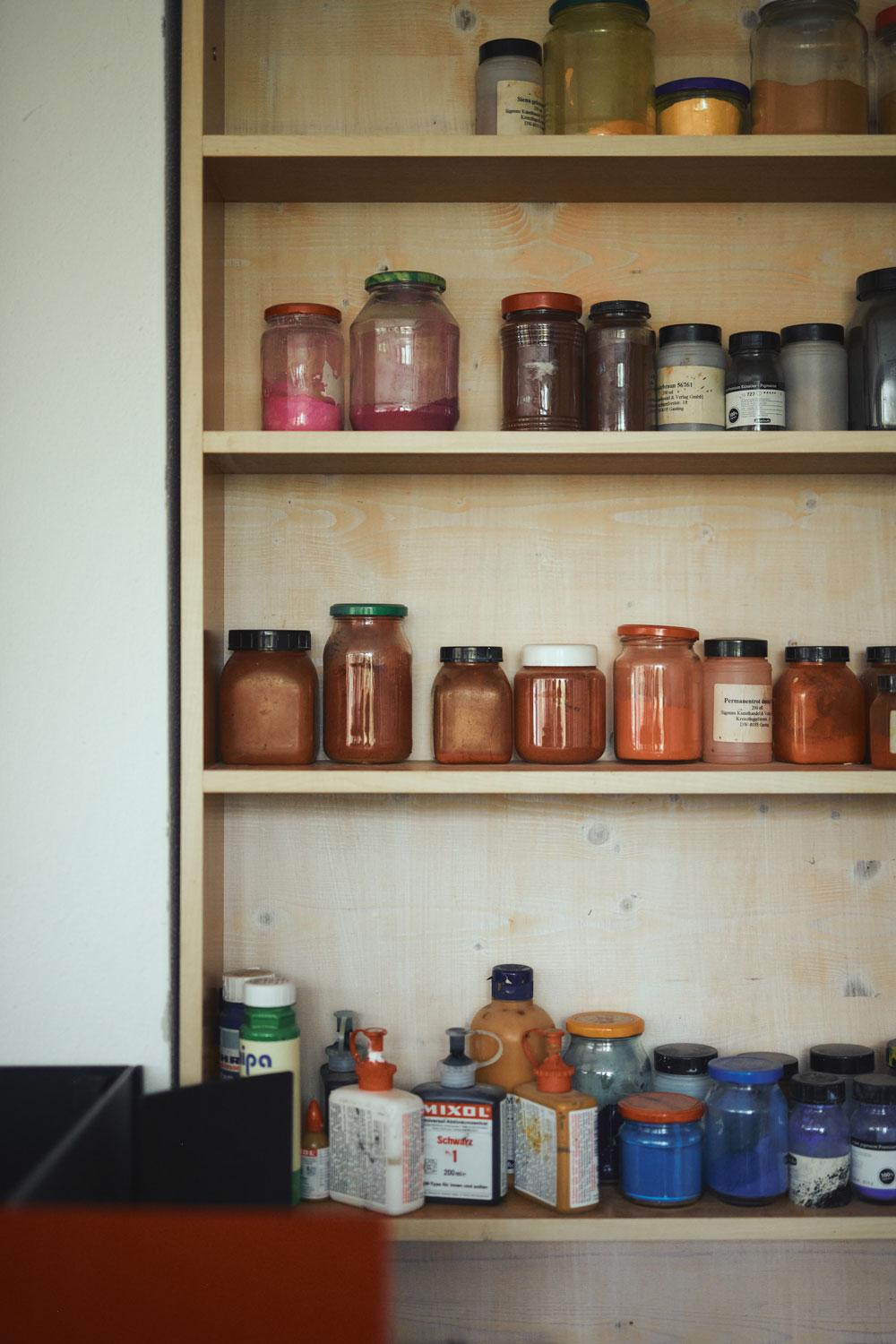
What advice do you have for someone starting out as a set designer?
Just do it. Those who want it will make it happen, and it’s great. It’s tough, but it’s also great. It’s so versatile, broad, and uplifting – most of the time. I don’t have any real advice. The engagement with it is what’s important. The result, how it looks on stage, is secondary to me. The interaction, the dialogue, dedicating yourself as a collective or team to an art form is something that’s truly relevant – for society, for our minds, and for progress.
